I have mentioned before that I feel it is important for children to start learning foreign languages at an early age. Ever since Tabitha was a preschooler, I have found ways to include some instruction in foreign language, usually Spanish, but sometimes French as well. I don't remember all the details about the research behind learning a foreign language at a young age, but I do know they are a lot more receptive, and their brains are at the point where they can just soak up this information. I also remember how well the children did when learning French and Spanish when I was working with the preschoolers in the Montessori. Lately however, most of the foreign language programs we have been learning with have focused more on the older girls. Which means Harold and Hannah have been missing out. That is why I was thrilled when we had the opportunity to review the Educator's Spanish Collection from Whistlefritz.
Whistlefritz is an immersion foreign language program that is designed for young children, anywhere from ages 1-7 years old. The Educator's Collection that we received contains all of the Whistlefritz Spanish DVDs and CDs. Plus we received the Spanish Matching Card game and the Spanish Lesson Plans For Kids.
There are five DVDs and three CDs included in this boxed collection.
Here is a list of the DVDs:
- Los animales
- Vamos a jugar
- Adentro y afuera
- Las estaciones
- La fiesta de fritzi
And here is a list of the CDs:
- ¡Sabor!
- ¡A Bailar!
- Cha, cha, cha
The earlier DVDs, Los animales and Vamos a jugar, are recommended for younger ages, 1-5, while the remaining DVDs are recommended for slightly older children, ages 2-7. My children have been enjoying each of the DVDs we have watched so far, and they range in age from 5-10.
The Lesson Plan book is full of fun hands-on lessons. It is designed for preschool through early elementary aged children. The book begins by telling us a little bit about the authors and some information about Spanish vocabulary. After the Table of Contents and a Foreword, we move straight into the Lesson Plans. There are 40 activity-based lessons, which also bring in other subjects, such as math and science, making this a great cross-curricular program. We start out by learning how to introduce ourselves (greeting, name, how we are). Then there are lessons that focus on colors, numbers & counting, shapes, and places to live. There are also lessons on family members, clothing, seasons, parts of the body, food & drink, and animals. Each of these different topics has multiple lessons that build upon the previous lessons.
Each lesson follows the same basic format. At the top of the page you will find a brief description of the lesson, the goal, the objective, the list of vocabulary learned in the lesson, materials needed, and time required to complete the lesson. Then the activities are fleshed out with the focus, scripted teacher input (in English and Spanish), guided practice, independent practice, closure, and extension activities.
These lesson plan instructions are usually printed on two pages, though sometimes the lessons are short enough that all the information fits on one page. The majority of the lessons have reproducible pages for use during the lesson.
Lesson 3 required the following pages for the Presents Game:
The present cards were to be cut out and colored. The number cards just needed to be cut out (there was also a number 10 card on the next page). And there were several game boards so each child could have a different one.
The reproducibles vary from lesson to lesson. There are game cards, game boards, graphs, templates, flashcards, worksheets, pages & images for making books, paper dolls, and more. Some lessons have very little parent/teacher prep time, while others are definitely more time intensive when it comes to getting the materials prepared. Most of these materials are usable in their black and white format; however, some need to be colored. If you don't mind using colored ink, some of these can be found on their website in color, making for less work for the parent. Though, coloring the pieces can be made to be a part of the lesson, and the children can become even more involved.
The Spanish Matching Cards Game is for ages 3 and up.
It contains 50 colorful cards that feature Rito the fox, plus an instruction card (English on one side, Spanish on the other). As it is a memory matching game, there are two of each card. All of the cards focus on different actions that Rito is pictured doing, along with the Spanish word at the bottom of the card. As you can see, the background of the cards are different colors. There are blue, green, pink, and yellow backgrounds. However, I haven't really been able to determine if there is any reason for the different actions to be on the specific colors, and they are not divided evenly into the different colors. There are 8 pairs of blue cards, 5 pairs of green cards, but 6 pairs of both the pink and yellow cards. Luckily I'm not OCD like my husband, because I am sure that would drive him crazy. This isn't really anything negative about the cards and doesn't affect game play, but it did make me curious.
I have found that some of the actions are easy to figure out the meaning for, while others may need some help of some sort of translation site online or an English/Spanish dictionary (do people still use those?).
Now that I have shown you everything we received, let me tell you how we used this Educator's Spanish Collection of Whistlefritz.
It is recommended to introduce the child(ren) to the program by showing one of the DVDs. Though Harold and Hannah are the primary children using the program, all of the children enjoy watching the videos.
Yes, that would be the box the program arrived in right there next to Harold. They were quite excited to get it out and start watching.
The videos are a combination of live action and animation. Sometimes we may see children playing or interacting with family and friends.
Sometimes we will see Maria interacting with children.
And other times she is interacting with Fritzi the animated mouse, or even different puppets.
And there are also the fun song segments, which sometimes have this gentlemen playing his guitar:
As this is an immersion program, the characters speak and sing only in Spanish. There is no translation in the videos whatsoever. They do not translate verbally and there is no English translation on the screen. However, Maria and the children will repeat words or phrases over and over again, demonstrating what they are talking about. She will ask questions, expecting a response from the children. Then Maria will elaborate in a sentence, repeating the word with more detail. As the viewer watches the children on the video respond, they learn how to respond as well.
The videos are only scheduled in the lesson plans in segments. So, when we did lesson 1 for example, which focused on greetings, we watched "Buenos dias, amiguitos" on the DVD Vamos a jugar. We also listened to it on the CD ¡Sabor! out in the van when we didn't have electricity. When we were learning about colors while preparing for Fritzi's birthday party in lesson 2, we watched the scene from La fiesta de Fritzi where Rito the fox catched different colored balloons.
And while we were learning numbers and one-to-one correspondence in lesson 3, we watched the song "Los deditos" on Vamos a jugar.
I admit, we usually end up watching more than just the one scheduled song, because the children really enjoy watching these videos and don't want to stop with just one short segment. Also, not all lessons have a recommended video segment scheduled, but when one is listed, it will be under the "Extension Activities." So, there are days I just pick, or have the children pick which video they want to watch for their Spanish time.
After we watched our first video all the way through, I started following the lesson plans. We have averaged about two lessons a week, but, as I mentioned above, we have also been watching videos and listening to the CDs at other times during the week. I follow the scripted lesson as well as I can. The sentences are given in English and then in Spanish in the parentheses. I tend to choose parts of the Spanish to say, as I can't always pronounce the words. When I stumble over the Spanish too much, the children are lost. I do try to use as much Spanish as possible, and I use motions to try to get them to understand what I am saying.
We start each lesson with a lot of review from the previous lessons.
Let's look at the hands-on aspect of this program.
We made puppets to use while learning about greetings:
Then we used paint to mix colors and make balloons for Fritzi's birthday party. We were supposed to use transparencies and markers to create balloons to mix colors, but as we didn't have those, I decided we would have some color-mixing painting fun with the extension activity as our main activity.
We would say the colors in Spanish and then I would ask (in Spanish) what color we get when we mix each color.
And it gave us balloons to use when we reviewed colors. I use these balloons to have the children tell me the color (¿Que color es este?), and find the color (¿Donde esta el globo rojo?).
We learned the numbers in Spanish and worked on one-to-one correspondence with the Birthday Present Game. Even Amelia joined in on the fun!
We continued our study of numbers and colors, while adding in sorting and graphing. Yes, Amelia really has been enjoying Whistlefritz along with the younger children.
We learned about shapes while reviewing our colors with these flashcards.
We learned how to say "This is a color shape"
For example:
"Este es un triángulo amarillo."
Then I cut out a bunch of shapes using the provided shape templates, so the children could each make a collage.
As Harold has been struggling with remembering the numbers in Spanish, we have spent some time reviewing numbers. I had them lay them out, count them, and identify them.
We recently moved on to learning about where we live (in a house, in a town) and will be moving on to different parts of the house next.
And yes, we reviewed colors once again with this worksheet.
Whistlefritz is a wonderful foreign language program for young children. I love the inclusion of different subjects with the cross-curricular content in the Lesson Plans. And the hands-on activities are great, though sometimes they get postponed when I discover I have lots of preparing to do. As I was getting ready for the graphing with goldfish crackers lesson, I remember wishing there was a list at the beginning of the book which told the parent/teacher what materials were going to be needed for each lesson. Granted, better organization on my part would also have helped. There is a lot of photocopying necessary for preparing the lessons. Personally, I would prefer the black & white reproducibles be available online along with the color versions. This is mainly because my printer uses a lot more ink in copy mode.
The videos are so cute and fun to watch. Even mommy has enjoyed watching them in an attempt to improve her Spanish. The younger children have admitted they still are unsure of what is being said a lot of the time, even after multiple viewings; however, the older girls are definitely catching on. It is recommended not to translate into English, but all the children do attempt to do so. I think the younger a child is introduced to these videos, the more likely they will not need the English translations, but I am not positive about that. Still, they enjoy watching them and I think they are getting more out of them than they are realizing.
We enjoy listening to the CDs in the van, though I admit, we really have no idea what is being said in most songs. I have been able to figure out some obvious ones, like "Old MacDonald had a Farm" and "Head and Shoulders, Knees and Toes," and we are learning more as we continue to listen. The back of the cases for the DVDs and CDs state that translation guides are inside; however, they are actually found on the website, and I only just figured out where they are. You can find these word-for-word translations for the CDs on the Translation Guides page. We will definitely be using these going forward. There are translation guides for the DVDs as well, though they don't have the word-for-word translations for the songs. However, it appears that they do have translations for all the words taught on the DVD.
This is definitely a foreign language program suitable for younger children, and it is one that I highly recommend.
This is definitely a foreign language program suitable for younger children, and it is one that I highly recommend.
Don't forget to click on the banner to see what my fellow Crew Mates had to say about Whistlefritz. Some reviewed the Educator's Spanish Collection like we did, while others reviewed the Educator's French Collection.


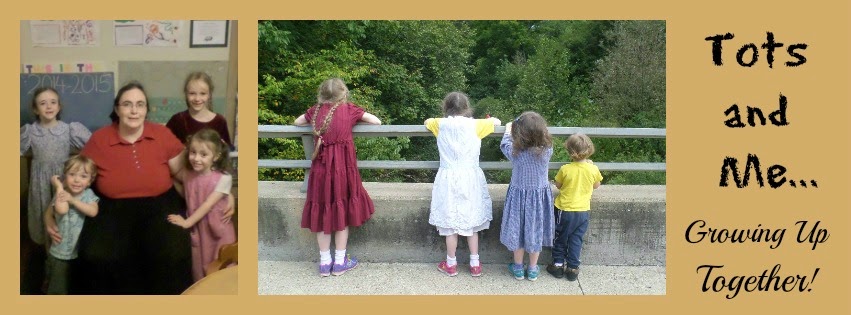




































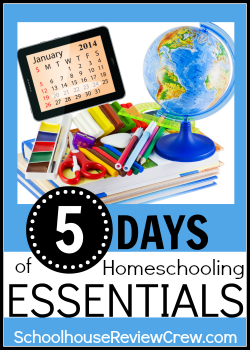


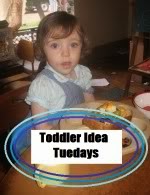
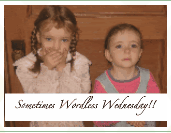








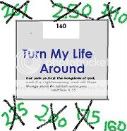
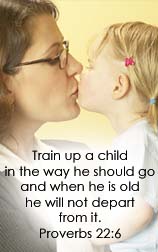



![[PREMIO2009.png]](http://3.bp.blogspot.com/_ymwlW_48TOU/S1pfH_bfQPI/AAAAAAAADCs/4Qq0ZzKnfUE/s1600/PREMIO2009.png)
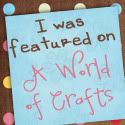
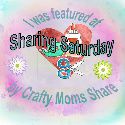


No comments:
Post a Comment
Thank you for visiting my blog today. I love to read your comments, so please leave me one if you have the time.
Blessings